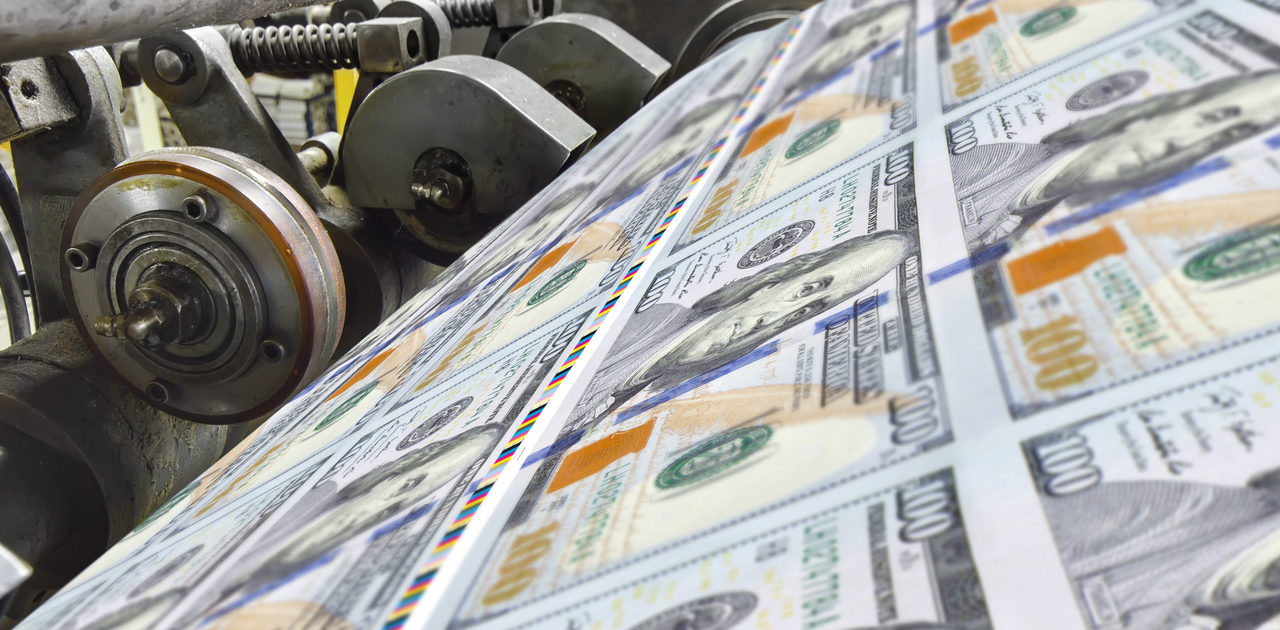
Modern Monetary Theory: Voodoo Economics Redux?
There is a whiff of “free lunch” to Modern Monetary Theory; that is, governments can spend money almost limitlessly without consequence. However, this raises some concern.
To view the full article please register below:
Modern Monetary Theory: Voodoo Economics Redux?
Modern Monetary Theory (MMT) postulates that countries that incur debt denominated in their own currency needn’t worry about government deficits because they can always print new money to fund their debt.
The central idea behind MMT is that conventional views about debt are misguided. Rising debt-to-GDP ratios are not in of themselves worrying; accumulated debts are only worrisome if they lead to accelerating inflation. So as long as inflation doesn’t jump, MMT says that deficit spending can safely continue. Moreover, MMT argues that federal deficits are a two-side coin—on one side is debt of the issuing government and the flip side is financial wealth of the owners of that debt.
MMT proponents also argue that deficits can be too small, the evidence of which is seen in unemployment. Thus, the objective for policymakers, according to MMT, is to find the right balance of deficit spending that promotes full employment but does not spark higher inflation.
MMT: Old Idea in New Clothes?
There is a whiff of “free lunch” to MMT; that is, governments can spend money almost limitlessly without consequence.
The attraction of MMT has grown recently in view of the already existing mountain of federal debt and the desire to keep the spending tap wide open, especially to fund big ideas like the Green New Deal and Medicare for All. It seems in one fell swoop that MMT relieves the sense of guilt and responsibility of saddling future generations with our profligate spending, while providing a license to spend even higher amounts.
Traditional economic theory generally views money like any other commodity—the greater the supply, the lower the value. History is replete with examples of countries that tried to pay for excessive spending by printing money and only ending up with hyperinflation and a collapsed economy. (See our past post, A Historical Look at Hyperinflation.)
The other concern with MMT is that it assumes investors will continue to buy the debt. Any loss of investor confidence or surge in interest rates could lead to real difficulties in funding the accumulated debt. In the extreme, interest and principal repayments could end up absorbing all the government’s spending power in the future, leaving little left to fund actual programs.
Though MMT is getting its “15 minutes of fame,” the probability of it gaining widespread acceptance, for now, seems remote. In a recent survey of leading economists by the University of Chicago’s Booth School of Business, 0 percent “strongly agreed” or “agreed” with the MMT central idea that governments were unconstrained in creating debt.1
Who says economists can’t ever agree?
Source:
See referenced disclosure (2) and (3) at https://blog-dev.americanportfolios.com/disclosures/












